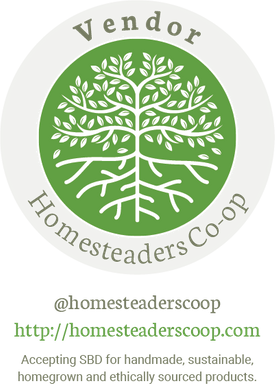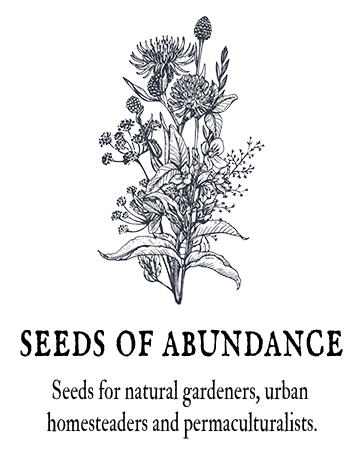
Hello! I’m Idyllwild, a lover of natural hues, rainbows, flowers, dyes, and the myriad of stunning plant species in this wondrous world we live in. Above all, my work is about appreciating and connecting with nature.






In a past life, I was a marketing manager. Disillusioned with our system, I left the corporate world about three years ago and have never once look back. I now work on farms in northern California and the Pacific Northwest. It’s an amazing life and I love every moment of it. At the moment, I’m living on a beautiful off-grid homestead in a small rural town in southern Oregon. Being on a farm has many perks - community, good food, and an abundance of materials to play with.
My partner and I also love wild harvesting. He seeks out wild medicine and foods and I’m keen on dye matter and dried flowers. We often find many overlaps between our two worlds! For example, we both get excited over elderberries and oregon grape. Once while we were harvesting elderberries, a car stopped by and a couple chatted excitedly with us about their own discovery of a wild plum grove. We immediately drove there and spent hours tasting all the plums and dreaming up ways to preserve them. Every day we feel so grateful for nature’s abundance.

Our dream is to have our own permaculture flower farm in the near future to create a space of gathering, learning, and sharing. We’ve saved up for many years and this coming spring will be the beginning of manifesting our dream. Thanks for supporting artisans like me. Your purchases go towards helping me achieve my dream and bring more beautiful, naturally made product options to our market.
I grow, gather, and sustainably wild harvest plants and hand dye each yarn skein and textile with the plant material I collected. I fix the dye onto fibers through using a mordant. When possible, I choose a natural mordant such as walnut hulls, acorns, or other plants that contain a lot of tannins (named for its ability to "tan" hides). I also choose plants that have a long tradition of use as dye, ensuring that it's been time tested to last.

Colors derived from plants are one of kind, each one imbued with a natural, earth-tone hue. Plants can impart a wide range of surprising colors. Black hollyhock creates blueish greens. Yellow onion skins create a gorgeous marigold orange. Avocado pits make the softest pinks. It's a joy to discover what each plant offers and I'm constantly exploring and experimenting with the wide spectrum of colors possible.

Aside from natural colors, I use only the best quality materials and I try to source sustainable fibers such as unbleached wool, organic cotton, or reclaimed/recycled silk.
The Gentle Soul's catalog is online at Homesteaders Co-op, accepting STEEM, SBD and USD and shipping 🌍 internationally! https://homesteaderscoop.com/store/the-gentle-soul/

Proudly Contributing To:

homesteaderscoop.com | @homesteaderscoop


#ghsc | Introducing @ghscollective | Discord Community

#naturalmedicine | Introducing @naturalmedicine | Discord Community

#tribesteemup | @tribesteemup | The 8 Pillars of TribeSteemUp
Interesting post to find out which things you use for dyes.
Loved the little tidbit about the elderberries and plums. Why do you go bananas over oregon grape? I see these all the time growing in shady nature parks, and always wondered what's so great about them.
Tiger Lily and Crocus stamens are notorious for staining fingers. Turmeric rhizomes too. What makes the best indigo black ink?
Downvoting a post can decrease pending rewards and make it less visible. Common reasons:
Submit
Ahhh, Maholia aquelium (Oregon grape)... there's a lot to love about them! I got to know Oregon grape while I was working at a homestead in East Washington, where they also grew everywhere in huge abundance. I became curious about them and began some research. I learned that Native Americans used the roots and bark of the plant for medicinal purposes (more info here: https://pfaf.org/user/plant.aspx?latinname=Mahonia+aquifolium). The roots and stems were also used for dye (it has a bright yellow color). Well since I had so much abundance of them, I dug up some roots (which is pretty laborious!) and tried it out. It created a really lovely buttery yellow color.
Then later in the summer when the plants became loaded with berries, we collected a whole bunch and made jam with it. It tasted yummy! As the berries stained my hands, I thought to try it as a dye. Berries are notoriously "fugitive," meaning that though it seems like they'd make a great color, the color fades quickly and does not stay. But since Oregon grape has natural tannins, I thought it might just work. I tested it by dying yarn with the berries and then let the fabric sit in direct sunlight for several days to see if the purple color fade. It did not, so voila, a new discovery :).
Turmeric is a great dye plant. I haven't tried Tiger Lily or Crocus yet, and if I find a lot of either, I certainly would give it a go!
Black is actually a very difficult color to find in the natural world, so in the past people would make the colors by combining several different plants. I think you can achieve indigo-black by mixing indigo with black walnut, but you never know until you try!
Downvoting a post can decrease pending rewards and make it less visible. Common reasons:
Submit
This post was shared in the Curation Collective Discord community for curators, and upvoted and resteemed by the @c-squared community account after manual review.
@c-squared runs a community witness. Please consider using one of your witness votes on us here
Downvoting a post can decrease pending rewards and make it less visible. Common reasons:
Submit
I never thought that we could dye some cotton strings using some common herbs. Do you know if the color continue to be so live after a few washes? Thanks for sharing.
Posted using Steeve, an AI-powered Steem interface
Downvoting a post can decrease pending rewards and make it less visible. Common reasons:
Submit
The colors will stay after a few washes if they are "fixed" onto the fabric with a mordant, as I described in the post. It also depends quite a lot of the fabric too. Certain fabrics like wool and silk tend to keep the colors longer than cotton or hemp. If the fabric has been bleached previously or has nylon (i.e. plastic) fibers, the colors will fade very fast. How you wash the fabric also plays a part - use of bleach and harsh detergents will fade the colors whereas natural soaps (like Dr. Bronners) would be less harsh.
I've been amazed when looking at indigenous textiles from all the world - rugs, blankets, kimonos, baskets, etc - which were all originally dyed with only plant materials, and how vibrant they still are today. It's a testament to their skills as well as our natural plant colors. I hope this info helps!
Downvoting a post can decrease pending rewards and make it less visible. Common reasons:
Submit
Amazing man, thanks for sharing.
Posted using Partiko iOS
Downvoting a post can decrease pending rewards and make it less visible. Common reasons:
Submit
Beautiful work you done over the yarn and the fabric... the colors are fantastic
Have a great day!
Posted using Partiko Android
Downvoting a post can decrease pending rewards and make it less visible. Common reasons:
Submit
Thank you very much for stopping by!
Downvoting a post can decrease pending rewards and make it less visible. Common reasons:
Submit
Oh! How cool, wonderful & exciting!! I just fist pump, dance and shrill with gladness at your work, joyous spirit and these exciting events of dreams coming true! Thank-you for offering your offerings. With Homesteader's Co-op it is like we have access to the works mentioned in The Celestine Proficy except that there's a global connection through these mindful farms. It's awesome!! All the best to you ❤ HUGS
Downvoting a post can decrease pending rewards and make it less visible. Common reasons:
Submit
Thank you @yogajill and how exciting to read a reference to The Celestine Prophecy! I loved that book and it's a great compliment to be recognized for being on that "path"! HUGS right back at ya!
Downvoting a post can decrease pending rewards and make it less visible. Common reasons:
Submit